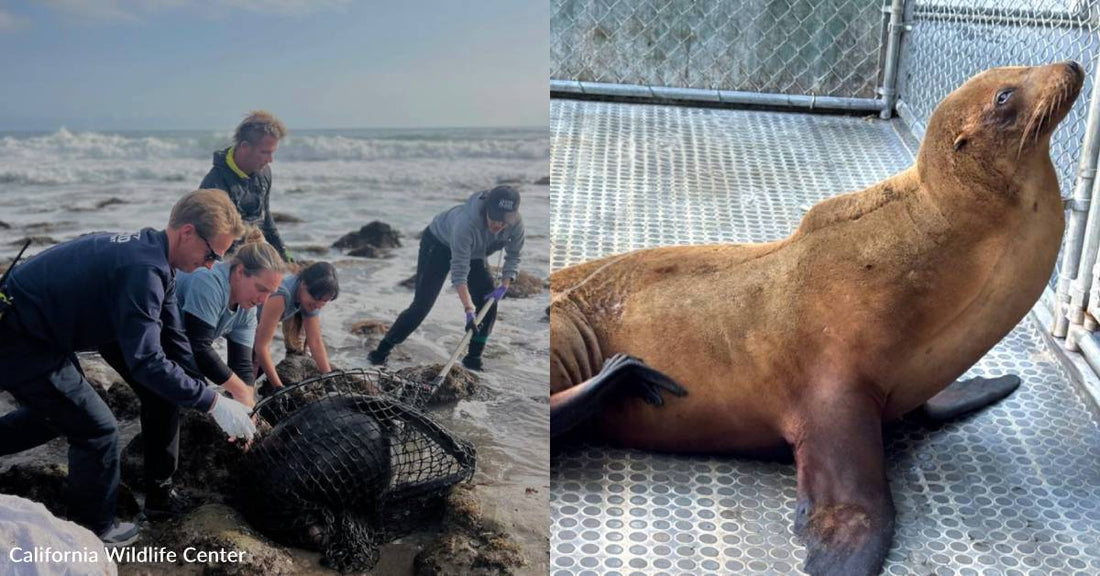Hundreds of Sea Lions, Dolphins Sickened By Toxic Algal Blooms
Michelle Milliken
Sea lions, dolphins, and other marine life are experiencing lethargy, seizures, and erratic behavior due to toxins in their habitat. With your help, we're supporting rescue efforts.
Southern California, particularly the stretch between Los Angeles and Santa Barbara counties, is experiencing significant harmful algal blooms, which have sickened or killed hundreds of sea lions and dolphins in recent weeks.

Though these blooms are becoming more common, this year’s onslaught is much earlier than usual, which officials believe may be linked with runoff from the devastating Los Angeles area fires at the beginning of the year.
According to a report from NOAA Fisheries, wildlife rescues are receiving around a hundred calls a day about stranded animals. In addition to strandings, they're also seeing animals with seizures, what appears to be head bobbing, swimming in circles in shallow water near the beach, and even dying.

These health impacts are caused by domoic acid, a neurotoxin produced by the harmful algae. Shellfish and other fish can become contaminated with the toxin, which then poisons the predators that eat them.
Ill animals have been inundating many rescue organizations, often leading them to choose to treat whichever animal is most apt to survive.

John Warner, chief executive officer of the Marine Mammal Care Center in Los Angeles, says, “We are having to do triage on the beach as we try to identify those animals where we have the greatest chance of making a difference.”
Other rescues are also reporting that they’ve been seeing more intense and unpredictable outbreaks of domoic acid poisoning in recent decades.

California Wildlife Center is among those responding and among those visited by our partner Greater Good Charities. They’ve seen beached short-beaked common dolphins, along with sea lions suffering from the blooms’ neurological impacts.
Rescue teams from CWC have responded to beaches to get these animals the care they desperately need.

As rehabilitation centers become more swamped with ill animals like this, we’re working with GGC to support organizations that provide care, from emergency medical treatment to diagnostic resources and food. We're also working to help restore their habitat. This wouldn’t be possible without your clicks, trivia participation, shopping for a cause, and direct donations.
If you’d like to provide more help to marine animals, click below!

